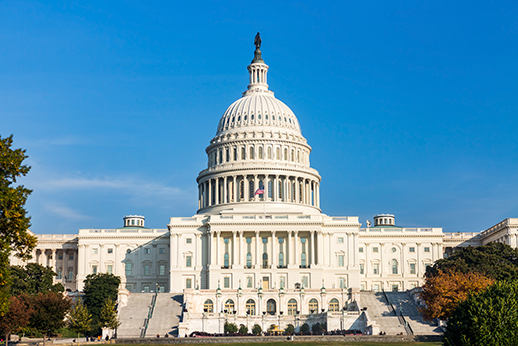
ACA Premiums Drop in Many States
Premiums for the benchmark silver health insurance plans under the Affordable Care Act will go down 1 percent to 2 percent, on average, in 2019.
This sounds like good news to people scurrying to enroll by the Dec. 15 deadline. But a more accurate characterization is that this slight decline is a break from what had generally been a relentless pace of premium hikes in 2016 through 2018.
Cynthia Cox, director of health reform and private insurance for the Henry J. Kaiser Family Foundation, said insurance companies in many states had previously “raised premiums more than they had to” amid the uncertainty in the program’s early years. These hikes boosted their profits, but they’ve “put the brakes on premium increases,” which they are required to justify to state regulators.
On close inspection, however, the picture is far more complex. Each state regulates its insurers, and individual state markets have gone in many different directions in the five years since the Affordable Care Act (ACA) went into effect, a Kaiser study shows. The unique developments in each state market reflect a combination of state and federal regulatory changes, insurers’ constant repricing to market conditions, and insurers’ entrances into, and exits from, the state insurance exchanges.
Here are a few examples, based on insurance companies’ rate filings with state regulators:
- Tennessee residents will see the biggest decline in 2019 premiums, a drop of 26 percent for the benchmark silver plan, which is the second lowest-cost silver plan. Tennessee insurers initially had set some of the lowest premiums in the country. In a 2018 adjustment, Cox said they overcorrected them to the point that the policies became “particularly overpriced.” Next year, insurers will drop the premiums as they continue their efforts to find the proper pricing for the state’s insurance market. Somewhat similar stories have played out in New Mexico, New Hampshire, and Pennsylvania.
- North Dakota premiums are going in the opposite situation. Two years ago, Cox said, insurers there were “losing money quickly,” so they raised their 2018 rates by 8 percent. This increase apparently wasn’t enough, and the benchmark silver premium will rise by another 21 percent next year.
- Alaska’s premiums got so high that the state stepped in. In 2017, the federal Centers for Medicare & Medicaid Services granted Alaska’s request for a waiver that allowed it to reinsure its health insurance companies to reduce their risk in hopes they would drop their prices. The reform worked. Between 2017 and 2019, Alaska’s benchmark premium has fallen 25 percent.
- New Jersey’s benchmark price will drop nearly 15 percent as a result of a new state law. Last summer, the state instituted a mandate requiring uninsured residents to purchase coverage to replace the federal mandate, which was eliminated. The state mandate, as expected, put downward pressure on premiums by expanding the pool of healthy people who buy insurance and mitigating the risk facing New Jersey health insurers.
- An unprecedented pricing quirk nationwide has surprised health experts. David Anderson at Duke University said some 2,000 counties will offer at least one gold plan with a lower premium than silver plans, even though gold plans have smaller deductibles than silver plans. In short, some people will pay less for higher-quality insurance. A change in federal regulations caused this discrepancy. In 2018, a subsidy ended for silver plans, which targeted lower-income people – this was on top of the main tax credit. Insurers made up the lost revenue by “artificially increasing” silver plan rates, Anderson said. Although silver rates have fallen slightly, Kaiser estimates they would’ve gone down about 10 percent if this second subsidy were still in place.
The next few years are sure to bring more changes. Health insurance enrollment is currently running below 2018 levels, which could require insurers to recalibrate – again.
Squared Away writer Kim Blanton invites you to follow us on Twitter @SquaredAwayBC. To stay current on our blog, please join our free email list. You’ll receive just one email each week – with links to the two new posts for that week – when you sign up here. This blog is supported by the Center for Retirement Research at Boston College.
Comments are closed.







We’ve been purchasing subsidized insurance on the healthcare.gov Exchange (in SW Ohio) since it’s inception (by keeping our MAGI low), and have mostly positives to say about the insurance coverage.
We’re moving on to other coverage for 2019, but have looked into next year’s Exchange pricing purely out of curiosity. The subsidized Silver HMO plan that we purchased this year (with our MAGI estimate) – CareSource Low Premium Silver 2 – has premiums of $108.41/mo ($1,900 deductible; $3,200 max).
That same subsidized plan (at the same MAGI estimate as this year) in 2019 will cost $818.16/mo ($1,900 deductible; $4,200 max). That’s a huge premium increase (7.5x) for a plan whose co-pay, co-insurance, etc. won’t be as good as this year.
Yes, the CareSource low-priced 2018 plan is being replaced by a new low-priced subsidized 2019 plan from another carrier – Buckeye Health Ambetter Balanced Care 11 – with premiums of $91.59/mo ($0 deductible; $5,200 max).
There is no question that it is less expensive. But, digging deeper shows that the Ambetter network of providers is very narrow, whereas the CareSource network was very broad (being the largest carrier in this region).
If that’s a reflection of what’s happening nationwide then yes, there are lower prices. But as for more choice, you may need to lean towards a higher rate instead.
For 2019, my premiums are dropping roughly $100/month for the bronze plan but by out of pocket deductible is going from $6,100 per person, $14,400 family maximum, to $7,900 per person, $15,800 family max out-of-pocket. Premium savings is roughly $1,200/year but the out of pocket has jumped by $1,700! My monthly premium for this “affordable health insurance” is $2,398/month!
I am very concerned that with Trump’s effort to eliminate the penalty for not having insurance, we will see more young healthy people dropping out of ACA plans and the premiums jumping up as only those with health issues take insurance.
(See my book, Prescription for Bankruptcy.)
I am very concerned that with Trump’s effort to eliminate the penalty for not having insurance, we will see more young healthy people dropping out of ACA plans and the premiums jumping up as only those with health issues take insurance.
(See my book, Prescription for Bankruptcy.)
Dr. Hoffer’s comment that only those with health issues take insurance is, if true, indicative of tremendous short-sightedness.
None of us are promised continued good health, and none of us are immune to tragic accidents. Too often, a healthy person is struck down in the prime of life by a serious illness or accident. Everyone should have some sort of insurance, even if only to cover catastrophic situations that could happen to any of us.